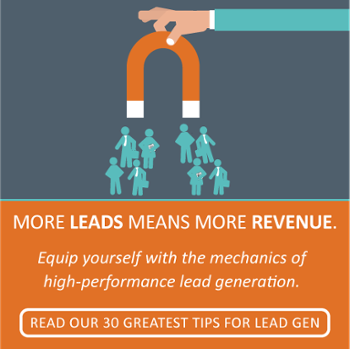5 Reasons Your Sales Team Does NOT Have Better Leads
If you're like many businesses we talk to regularly and work with, then you have a strong, dependable, hard-working sales team that spends a lot of...
3 min read
 LeadG2
:
May 17, 2017
LeadG2
:
May 17, 2017


We know that we are not alone in our misery and suffering.
There are tens of thousands of us in the same boat, seeking relief, year after year, hope after dashed hope, failure upon failure.
We are scorned, the targets of derision, the destination for the pointed finger and mirthful chuckle.
Yes, it’s awfully hard to be a Buffalo Bills fan.
But with a change in Bills leadership that promises cooperation, communication, teamwork, and a commitment to the twin lofty goals of accountability and responsibility, we have hope once again that our 17 year old drought will end in 2017.
Like the Bills, your company may be suffering from a drought that's stopping you from realizing your firm’s full new business potential. Of course, you’re making sales and getting new business, but can you do better? Just because you can put a few points up on the scoreboard doesn’t mean that you’re going to win the Super Bowl (Ouch. Sore subject.) of a record-breaking top line.
Just like the Bills need communication and cooperation in order to be a winner, your firm may need better and stronger communication and cooperation between its sales and marketing departments.
Here are a few ideas for putting together a winning team.
Our readers know that we are very big proponent of building new business through lead generation campaigns in conjunction with investments in branding. If your firm isn’t thinking “lead generation campaign,” you may want to do some investigation into the how-what-whys of lead generation.
(Check out LeadG2/s free resources on lead generation, including our latest white paper that describes a lead generation road map.)
To build and execute a successful campaign requires that marketing and sales get on the same page. That begins by getting around a conference table and working through these 12 critical questions:
We recommend that the answers to these questions be written and approved in a document called a “Service Level Agreement.”
At its most fundamental level, a sales and marketing service level agreement is a contract between marketing and sales teams that defines roles, responsibilities, performance metrics and working relationships. There is a lot of literature on what SLAs are, what they do, and how they can be structured, including LeadG2’s blogs about service level agreements, accessible here.
Why bother with an SLA?
HubSpot’s 2015 State of Inbound Marketing report highlighted three compelling advantages for companies that maintain their SLA:
Another question for your firm’s management is whether you can put together a do-it-yourself Service Level Agreement, or bring in an outside facilitator to help frame the discussions, negotiate the terms, and put together the “contract” between marketing and sales.
 Now it’s no secret that I’m going to say, “Well, yes! Of course!” but I’m hoping you’ll see my enthusiasm as being less motivated by self-interest and more motivated by the fact that an arbiter by nature needs to be neutral. Our advice is to talk to a few different firms (including LeadG2) to talk about your situation and decide if an investment of this nature merits consideration.
Now it’s no secret that I’m going to say, “Well, yes! Of course!” but I’m hoping you’ll see my enthusiasm as being less motivated by self-interest and more motivated by the fact that an arbiter by nature needs to be neutral. Our advice is to talk to a few different firms (including LeadG2) to talk about your situation and decide if an investment of this nature merits consideration.
Though the Bills won’t be calling on us to negotiate an agreement between offense and defense, we are 100% confident that we can pinpoint the pain, issues, and needs they’re facing!

If you're like many businesses we talk to regularly and work with, then you have a strong, dependable, hard-working sales team that spends a lot of...

As part of the LeadG2 series on "The 10 Commandments of Inbound Marketing" we will be discussing each of these 10 commandments and the importance of...

This time of year, many organizations start turning their attention to the new year. Why don't they wait until January? What’s the rush? These...